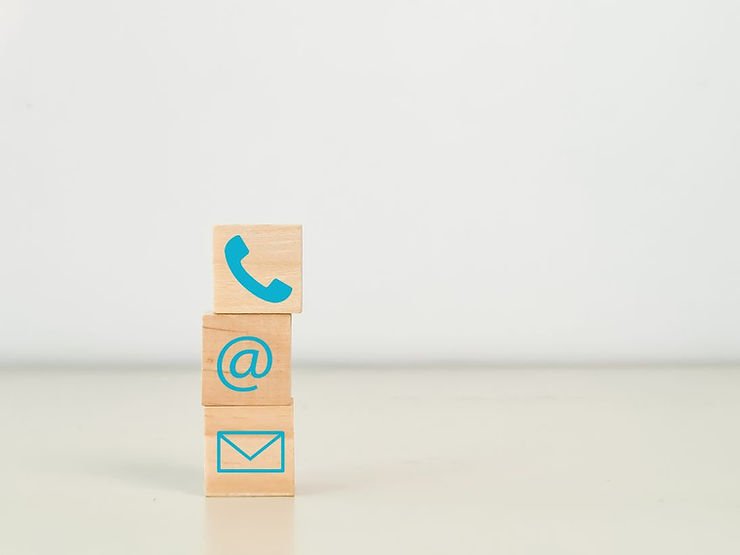Effective email segmentation in e-commerce marketing involves identifying different customer segments, tailoring content to their specific interests and needs, and using automation to send targeted messages that drive engagement and sales.
What is E-mail Marketing in E-commerce?
As an e-commerce business, you know the importance of reaching your customers effectively and efficiently. Email marketing is a proven strategy for building customer relationships and driving sales, but with so many businesses vying for attention in the inbox, it can be challenging to stand out. That’s where email segmentation comes in. By dividing your subscriber list into specific segments based on their behaviors, demographics, and preferences, you can deliver personalized messages that resonate with each individual subscriber. In fact, research shows that personalized emails have an open rate of 29%, compared to non-personalized emails which have an open rate of only 17.6%. Additionally, segmented email campaigns have a 14.32% higher open rate and a 100.95% higher click-through rate than non-segmented campaigns. In this post, we’ll explore how to use email segmentation to improve engagement and sales in your e-commerce business. We’ll discuss the benefits of segmentation, share best practices, and provide examples of successful email segmentation campaigns. By the end of this post, you’ll have a solid understanding of how to use email segmentation to create effective, personalized campaigns that drive results.
Email marketing is a critical component of any successful e-commerce strategy. However, with inboxes flooded with promotional messages, it can be a challenge to get subscribers to open and engage with your emails. This is where email segmentation comes in. Email segmentation involves grouping subscribers into different segments based on their behaviors, demographics, and preferences. By tailoring content to these segments, you can deliver more relevant and personalized messages that drive engagement, increase conversion rates, and improve customer retention. We’ll discuss the benefits of segmentation, highlight the challenges of email marketing, and provide best practices for implementing segmentation in an ethical and effective way. Whether you’re a small business owner or a seasoned e-commerce marketer, this post will provide valuable insights on how to take your email marketing strategy to the next level. By dividing your email list into different segments based on behaviors, demographics, and preferences, you can create targeted campaigns that resonate with each individual subscriber.
Behavioral Segmentation
One of the most effective ways to segment your email list is through behavioral segmentation. This involves grouping subscribers based on their actions, such as their purchase history, engagement with previous emails, and website activity. For example, you can create a segment of subscribers who have made a purchase within the last 30 days and send them targeted messages promoting related products or offering exclusive discounts. You can also segment subscribers who have not opened your recent emails and send them a re-engagement campaign to encourage them to take action.
Demographic Segmentation
Demographic segmentation involves grouping subscribers based on their personal characteristics, such as age, gender, location, and income. This type of segmentation can be useful for businesses that sell products or services that are targeted towards specific groups. For example, a clothing retailer may segment their list by gender and send targeted messages promoting men’s and women’s clothing. A travel company may segment their list by location and send promotions for local getaways to subscribers in the same area.
Preference Segmentation
Preference segmentation involves grouping subscribers based on their preferences, interests, and behaviors. This type of segmentation can be more complex and requires more data about your subscribers. For example, you can create a segment of subscribers who have shown interest in a specific category of products, such as hiking gear or beauty products. You can also segment subscribers based on their preferred frequency of emails, content type, or preferred communication channel.
Psychographic Segmentation

Psychographic segmentation involves grouping subscribers based on their personality traits, values, and attitudes. This type of segmentation is more advanced and requires more in-depth data about your subscribers. A wellness brand may segment its list by subscribers who value self-care and mindfulness, and send targeted messages promoting products that align with those values. A luxury brand may segment its list by subscribers who value exclusivity and send them exclusive offers and experiences. Email segmentation is a powerful tool for e-commerce businesses that want to deliver relevant and personalized messages to their subscribers. By identifying different customer segments based on behaviors, demographics, preferences, and psychographics, you can create targeted campaigns that resonate with each individual subscriber. When done effectively, email segmentation can improve engagement, increase conversion rates, and improve customer retention.
Hybrid Segmentation
In addition to the four primary segmentation criteria discussed above, businesses can also use a hybrid approach to segmenting their email list. This involves combining multiple criteria to create more targeted and specific segments. You can create a segment of subscribers who have made a purchase within the last 60 days and live in a specific location. You can also create a segment of subscribers who have shown interest in a specific category of products and prefer to receive emails once a week.
Analyzing Data
To effectively segment your email list, you need access to data about your subscribers. This can include data from your website, email marketing platform, and other sources. You can analyze data to identify patterns and trends that can inform your segmentation strategy. For example, you can analyze purchase history data to identify which products are most popular among your subscribers and create targeted campaigns around those products.
Testing And Iterating
Email segmentation is not a one-time task. It requires ongoing testing and iteration to ensure that your segments are effective and relevant. You can use A/B testing to test different segmentation criteria and messaging to determine what works best for your audience.
Importance Of Ethics
When using email segmentation, it’s important to prioritize ethics and respect for your subscribers’ privacy. You should be transparent about how you’re using their data and give subscribers the option to opt out of certain segments or all email communications. Identifying customer segments is a critical step in using email segmentation effectively for e-commerce marketing. By using behavioral, demographic, preference, psychographic, and hybrid segmentation criteria, analyzing data, testing, iterating, and prioritizing ethics, businesses can create targeted campaigns that resonate with their subscribers and drive engagement and sales.
Tailoring Content To Specific Segments
Once you’ve identified different customer segments, the next step is to tailor your content to each specific segment to maximize engagement and drive sales.
Personalization
Personalization is a key component of email segmentation. By using subscriber data to create personalized messages, you can increase engagement and drive sales. For example, you can include the subscriber’s name in the email subject line or greeting. You can also use their purchase history to recommend related products or offer personalized discounts.
Targeted messaging
Targeted messaging involves tailoring your content to specific segments based on their interests, behaviors, and preferences. For example, you can create a segment of subscribers who have shown interest in a specific category of products, such as outdoor gear. You can then send targeted messages promoting outdoor gear products or content related to outdoor activities.
Dynamic content
Dynamic content involves using email marketing software to display different content based on the subscriber’s preferences or behavior. You can create a segment of subscribers who have abandoned their cart and send a follow-up email with dynamic content that displays the specific products they left behind. You can also use dynamic content to display different product recommendations based on the subscriber’s browsing history.
Timing
Timing is also an important aspect of tailoring content to specific segments. By sending messages at the right time, you can increase engagement and drive sales. For example, you can create a segment of subscribers who have not made a purchase in the last 30 days and send them a targeted message promoting a limited-time offer. You can also send a follow-up message to subscribers who have opened but not clicked on a previous email to encourage them to take action.
Exclusivity

Exclusivity is another effective way to tailor content to specific segments. By offering exclusive content or promotions to specific segments, you can increase engagement and build loyalty. For example, you can create a segment of subscribers who have made multiple purchases and offer them exclusive access to a new product line before it’s available to the general public. You can also create a segment of subscribers who have subscribed to your newsletter and offer them exclusive content or promotions. Tailoring content to specific segments is essential for e-commerce businesses that want to maximize engagement and drive sales through email marketing. By using personalization, targeted messaging, dynamic content, timing, and exclusivity, businesses can create effective and personalized campaigns that resonate with their subscribers. By continuously testing and iterating, businesses can refine their email segmentation strategy and optimize their results.
Design
Design is another important aspect of tailoring content to specific segments. By using design elements that resonate with your target audience, you can increase engagement and drive sales. For example, you can use different colors, fonts, and images to create a design that appeals to a specific segment, such as a younger demographic or a more mature audience.
Language
Language is also important when tailoring content to specific segments. By using language that resonates with your target audience, you can increase engagement and build trust. You can use casual language and slang to appeal to a younger demographic or use more formal language to appeal to a more mature audience.
Testing and iteration
Tailoring content to specific segments is not a one-time task. It requires ongoing testing and iteration to ensure that your messaging is effective and relevant. Tailoring content to specific segments using email segmentation is a critical step in e-commerce marketing. By using personalization, targeted messaging, dynamic content, timing, exclusivity, design, language, and testing and iteration, businesses can create effective and personalized campaigns that resonate with their subscribers and drive engagement and sales. By continuously refining their email segmentation strategy, businesses can optimize their results and achieve long-term success.
Using Automation To Send Targeted Messages
Welcome Series
A welcome series is a sequence of emails that are sent to new subscribers to introduce them to your brand and encourage them to take action. By using automation to send a welcome series, you can ensure that new subscribers receive a consistent and personalized experience. You can use email segmentation to tailor the content of each email to the subscriber’s interests and preferences.
For example, you can send a welcome email that introduces your brand and offers a discount on the subscriber’s first purchase. You can then follow up with a second email that highlights your top-selling products and a third email that offers tips and advice related to your industry.
Abandoned Cart Reminders

Abandoned cart reminders are automated emails that are sent to subscribers who have added products to their cart but haven’t completed the purchase. By using email segmentation to create a segment of subscribers who have abandoned their cart, you can send targeted messages that encourage them to complete the purchase. You can send a reminder email that displays the specific products in the subscriber’s cart and offers a limited-time discount or free shipping to incentivize them to complete the purchase.
Product Recommendations
Product recommendation emails are automated messages that are sent to subscribers based on their browsing and purchase history. By using email segmentation to create segments of subscribers who have shown interest in specific products or product categories, you can send targeted messages that promote related products. For example, you can send a product recommendation email that highlights related products based on the subscriber’s browsing history or a cross-selling email that promotes products that are frequently purchased together.
Post-Purchase Follow-Up
Post-purchase follow-up emails are automated messages that are sent to subscribers after they have made a purchase. By using email segmentation to create segments of subscribers who have made a purchase, you can send targeted messages that encourage repeat purchases and build customer loyalty. You can send a thank-you email that offers a discount on the subscriber’s next purchase or a feedback email that encourages the subscriber to leave a review of their purchase.
Re-Engagement Campaigns

Re-engagement campaigns are automated messages that are sent to subscribers who have not engaged with your emails in a certain period of time. By using email segmentation to create a segment of subscribers who have not opened or clicked on your recent emails, you can send targeted messages that encourage them to re-engage with your brand. You can send a re-engagement email that offers a special discount or free gift to incentivize the subscriber to take action. Using automation to send targeted messages is a critical step in e-commerce marketing. By using email segmentation to create targeted segments and automation to send personalized messages, businesses can maximize engagement and drive sales while saving time and resources. By continuously testing and iterating, businesses can refine their automation strategy and optimize their results.
Triggered Campaigns
Triggered campaigns are automated messages that are sent based on specific subscriber behaviors, such as opening an email or making a purchase. By using email segmentation to create segments of subscribers who have performed certain behaviors, you can send targeted messages that encourage them to take further action. You can send a triggered email that offers a discount on a related product after the subscriber makes a purchase or a triggered email that offers a free trial of a product after the subscriber downloads a white paper.
Drip Campaigns
Drip campaigns are automated messages that are sent at regular intervals to nurture subscribers and encourage them to take action. By using email segmentation to create segments of subscribers based on their interests, behaviors, and preferences, you can send targeted messages that provide value and build trust over time. For example, you can send a drip campaign that offers tips and advice related to a specific product category or a drip campaign that promotes different products or services over a period of weeks or months.
Analytics And Testing
To ensure that your automated campaigns are effective, it’s important to use analytics and testing to measure engagement and optimize your strategy. You can use analytics to track metrics such as open rates, click-through rates, and conversion rates to determine which campaigns are most effective. You can also use A/B testing to test different elements of your campaigns, such as subject lines, messaging, and design.
Effective Email Segmentation in E-commerce Marketing
It’s important to follow best practices to ensure your segmentation strategy is effective and relevant.

Collect Relevant Data
To effectively segment your email list, you need to have access to relevant data about your subscribers. This can include demographic, behavioral, and preference data, among others. You can collect data through a variety of channels, including website analytics, surveys, and sign-up forms. It’s important to prioritize collecting data that is relevant to your segmentation strategy.
Create Clear And Specific Segments
To maximize the effectiveness of email segmentation, it’s important to create clear and specific segments. This means grouping subscribers based on specific criteria that are relevant to your business and marketing goals. For example, instead of creating a broad segment of “all subscribers,” you can create segments based on behavior, such as subscribers who have made a purchase in the last 30 days, subscribers who have abandoned their cart, or subscribers who have shown interest in a specific product category.
Tailor Content To Each Segment
Once you’ve identified different customer segments, it’s important to tailor your content to each specific segment to maximize engagement and drive sales. You can use personalization, targeted messaging, dynamic content, timing, and exclusivity, among other tactics, to tailor your content to each segment.
Test And Refine Your Segmentation Strategy
Email segmentation is not a one-time task. It requires ongoing testing and refinement to ensure that your segments are effective and relevant. You can also use analytics to track engagement and conversion rates and refine your segmentation strategy based on the results.
Prioritize Ethics And Privacy
When using email segmentation, it’s important to prioritize ethics and respect for your subscribers’ privacy. You should be transparent about how you’re using their data and give subscribers the option to opt-out of certain segments or all email communications. You should also ensure that your email campaigns comply with relevant laws and regulations, such as the General Data Protection Regulation (GDPR) in the European Union.
Use Automation
Automation is a powerful tool for e-commerce businesses to deliver targeted and personalized messages to their subscribers. By using automation to send targeted messages, you can save time and resources while maximizing engagement and driving sales. You can use automation to send welcome series, abandoned cart reminders, product recommendations, post-purchase follow-ups, re-engagement campaigns, triggered campaigns, and drip campaigns, among others.
Continuously Improve
Finally, to maximize the effectiveness of email segmentation, it’s important to improve your strategy continuously. This means regularly testing and refining your segmentation criteria, content, and messaging to ensure that your campaigns are effective and relevant. By using analytics and testing, you can measure engagement and optimize your strategy over time. Effective email segmentation is a critical aspect of e-commerce marketing. By following best practices such as collecting relevant data, creating clear and specific segments, tailoring content to each segment, testing and refining your strategy, prioritizing ethics and privacy, using automation, and continuously improving, businesses can create targeted campaigns that resonate with their subscribers and drive engagement and sales.
Use Segmentation To Target Different Stages Of The Customer Journey
Effective email segmentation can be used to target subscribers at different stages of the customer journey. This means identifying different segments based on where subscribers are in the sales funnel and tailoring your messaging to their needs. You can create segments of subscribers who are new to your brand and send them a welcome series to introduce them to your products or services. You can create segments of subscribers who have made a purchase and send them post-purchase follow-ups or cross-selling campaigns to encourage repeat purchases.
Monitor And Optimize Segmentation Over Time
Effective email segmentation is an ongoing process that requires continuous monitoring and optimization. By regularly reviewing your segmentation criteria and performance, you can identify areas for improvement and refine your strategy. For example, you can use analytics to track engagement metrics such as open rates, click-through rates, and conversion rates for each segment. You can also conduct surveys or feedback sessions to gather input from your subscribers on the relevance and effectiveness of your segmentation strategy.

Use Segmentation To Personalize The Customer Experience Beyond Email
While email segmentation is a powerful tool for e-commerce marketing, it can also be used to personalize the customer experience beyond email. By using the same segmentation criteria across multiple channels, you can create a consistent and personalized experience for your subscribers. You can use segmentation to personalize the content on your website or in your advertising campaigns. You can also use segmentation to personalize the customer experience in-store or through other customer touchpoints. Effective email segmentation is a critical component of e-commerce marketing. By following best practices such as using relevant data, creating clear and specific segments, tailoring content to each segment, testing and refining your strategy, prioritizing ethics and privacy, using automation, targeting different stages of the customer journey, monitoring and optimizing over time, and using segmentation to personalize the customer experience beyond email, businesses can create targeted and effective campaigns that drive engagement and sales since email segmentation is a powerful tool for e-commerce businesses to deliver targeted and personalized content to their subscribers.
By collecting relevant data, creating clear and specific segments, tailoring content to each segment, testing and refining your strategy, prioritizing ethics and privacy, using automation, targeting different stages of the customer journey, monitoring and optimizing over time, and using segmentation to personalize the customer experience beyond email, businesses can create targeted and effective campaigns that drive engagement and sales. Best practices for effective email segmentation include using relevant data, creating clear and specific segments, tailoring content to each segment, testing and refining your strategy, prioritizing ethics and privacy, using automation, targeting different stages of the customer journey, monitoring and optimizing over time, and using segmentation to personalize the customer experience beyond email.
To start experimenting with email segmentation in your own e-commerce marketing campaigns, consider identifying different segments based on demographics, behavior, preferences, and customer journey stage, and tailoring your content and messaging to each segment. Use automation to save time and resources while maximizing engagement and driving sales, and regularly test and refine your segmentation strategy using analytics and feedback from your subscribers. By continuously improving your segmentation strategy, you can achieve long-term success in e-commerce marketing.
Don’t Be Afraid To Start Small
If you’re new to email segmentation, it can be overwhelming to try to segment your entire email list at once. Instead, consider starting small by creating just a few targeted segments and testing them to see how they perform. This will allow you to learn and refine your strategy without risking a significant investment of time or resources.
Use Your Existing Data
You don’t need to start from scratch when it comes to collecting data for segmentation. Use the data you already have from your website, social media, and other channels to identify relevant segmentation criteria. You can also use surveys or feedback sessions to gather additional insights from your subscribers.
Stay flexible and adaptable
Effective email segmentation is an ongoing process that requires continuous monitoring and optimization. Be prepared to adapt and refine your strategy over time as you learn more about your subscribers and their preferences.
Don’t Forget The Basics
While email segmentation can be a powerful tool, it’s important to remember that the basics of email marketing still apply. This includes using clear and compelling subject lines, engaging and relevant content, and a clear call to action.
Get Creative
Email segmentation doesn’t have to be limited to traditional criteria such as demographics or behavior. Consider getting creative with your segmentation criteria to identify new and untapped segments. For example, you could create segments based on geographic location, interests, or psychographic factors. So, start experimenting with email segmentation in your own campaigns and see how it can help drive engagement and sales.
Challenges With Effectively Using Email Segmentation In E-Commerce Marketing
There can be some challenges associated with effectively using email segmentation in e-commerce marketing. Here are some of the common challenges and how to overcome them:

Data Quality And Availability
One of the biggest challenges of email segmentation is ensuring that you have high-quality and relevant data available to create your segments. It can be difficult to collect and maintain accurate data, and sometimes the data that you have may not be sufficient to create the segments that you need. To overcome this challenge, it’s important to prioritize collecting relevant data from your subscribers and ensuring that the data is accurate and up-to-date. You can use tactics such as sign-up forms, surveys, and website analytics to gather additional data about your subscribers.
Balancing Personalization And Privacy
While personalization is a key benefit of email segmentation, it’s important to balance personalization with privacy concerns. Subscribers may be uncomfortable with receiving overly personal or intrusive messages, and there are also legal and ethical considerations to keep in mind when using subscriber data. To overcome this challenge, it’s important to prioritize transparency and respect for your subscribers’ privacy. Be clear about how you’re using their data and give them the option to opt out of certain segments or all email communications.
Implementation And Execution
Effective email segmentation requires a significant investment of time and resources to create, implement, and execute. It can be challenging to ensure that your segments are effective and relevant and to create and execute targeted messaging for each segment. It’s important to prioritize planning and testing. Start small and test your segments and messaging to determine what works best for your audience. Use automation and other tools to save time and resources, and regularly monitor and optimize your segmentation strategy over time.
Email Fatigue
One of the risks of email segmentation is that it can lead to email fatigue among subscribers. If they receive too many emails that are not relevant or personalized, they may become disengaged or unsubscribe altogether. To overcome this challenge, it’s important to prioritize relevance and value for your subscribers. Focus on creating targeted messaging that is genuinely useful and interesting to each segment, and don’t overload subscribers with too many emails.
Segment Overlap
Another challenge with email segmentation is that subscribers may fall into multiple segments, which can create confusion or overlap in messaging. For example, a subscriber who has made a purchase in the last 30 days may also be interested in a specific product category. To overcome this challenge, it’s important to prioritize clarity and consistency in your messaging. Consider using exclusion criteria to prevent subscribers from receiving multiple messages that are not relevant to their interests.
Lack Of Resources
Effective email segmentation requires a significant investment of time and resources to create, implement, and execute. Small businesses or those with limited resources may find it challenging to implement a robust segmentation strategy. To overcome this challenge, it’s important to prioritize efficiency and automation. Use tools such as email automation software and pre-designed templates to streamline your segmentation strategy and save time and resources.
Limited Customer Response
Finally, a challenge with email segmentation is that it may not always lead to the desired customer response or engagement. Even with targeted and personalized messaging, some subscribers may not be interested in your products or services. Continuously monitor engagement and conversion rates for each segment and refine your messaging and content as needed. Consider conducting surveys or feedback sessions to gather input from your subscribers on the relevance and effectiveness of your segmentation strategy.
While there can be some challenges associated with effectively using email segmentation in e-commerce marketing, these challenges can be overcome with careful planning, testing, and execution. By prioritizing clarity and consistency, efficiency and automation, relevance, and value, and monitoring engagement and conversion rates, businesses can achieve long-term success with email segmentation. Visit us for e-commerce coaching to drive sales here.

